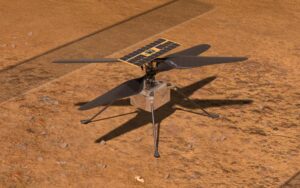What You Need to Know About NISAR, the 2024 Joint Satellite Mission Between NASA and ISRO
2 min read
What You Need to Know About NISAR, the 2024 Joint Satellite Mission Between NASA and ISRO
Developed collaboratively by the National Aeronautics and Space Administration (NASA) and the Indian Space Research Organization (ISRO), the NISAR mission is poised for liftoff in early 2024.
Following the remarkable success of India’s Chandrayaan-3 Moon mission, ISRO and NASA are gearing up for their next joint venture, the NISAR space mission.
On a recent visit to India, NASA Administrator Bill Nelson expressed his excitement about upcoming events and discussions aimed at strengthening the partnership between the two space organizations. During his stay, Nelson is expected to visit facilities in Bengaluru, where the NISAR spacecraft, a collaborative Earth-observing mission, is scheduled for liftoff in 2024.
Five Key Considerations for the NISAR Space Program
The collaborative effort involves the NASA ISRO Synthetic Aperture Radar, affectionately known as “NISHAR.” NISAR, the first radar imaging satellite to utilize dual frequencies simultaneously, is set to cost ₹12,505 crore (approximately 1.5 billion USD) in Indian rupees, making it the world’s most expensive Earth imaging satellite.
Launching in January 2024, NISAR will utilize advanced radar imaging technology to capture images of Earth’s land masses and ice sheets four to six times a month, achieving a resolution of 5-10 meters. The satellite’s mission includes researching complex natural events like landslides, earthquakes, ice-sheet collapses, volcanoes, and ecosystem changes.
NISAR’s data-gathering operations will significantly enhance scientists’ understanding of Earth’s natural resources, enable more effective natural disaster forecasting and analysis, and contribute to the study of crustal evolution. Importantly, the gathered data will be accessible to the public.
Also Read : Skin care in hindi wellhealthorganic for healthy face skin
Building on the success of the Chandrayaan-3 Moon mission, ISRO is actively working on the Chandrayaan-4 project. Additionally, ISRO is embarking on various space research initiatives to deepen India’s understanding of the universe, including the successful launch of Aditya L1, the country’s first solar observation mission.
Future ISRO Space Missions
- INSAT 3DS: Scheduled for launch in January 2024, this member of the INSAT family of spacecraft will play a crucial role in weather forecasting, disaster management, and understanding weather systems through satellite imagery.
- Gaganyaan 1: Anticipated to launch in January or February 2024, Gaganyaan 1 is a collaborative project between ISRO and Hindustan Aeronautics Ltd (HAL). This mission marks a crucial step in India’s human space mission plans, involving a test flight with three crew members.
- X-ray Polarimeter Satellite: Set to launch in early 2024, this satellite will study the polarization of cosmic X-rays for at least five years. It aims to observe pulsars, active galactic nuclei, black hole X-ray binaries, and non-thermal supernova remnants.
- Venus Orbiter Mission: As part of the historic Venus Orbiter Mission, ISRO plans to launch a spacecraft into orbit around Venus in 2025. The mission’s objective is to examine Venus’s atmosphere during its five-year orbit around the planet.







